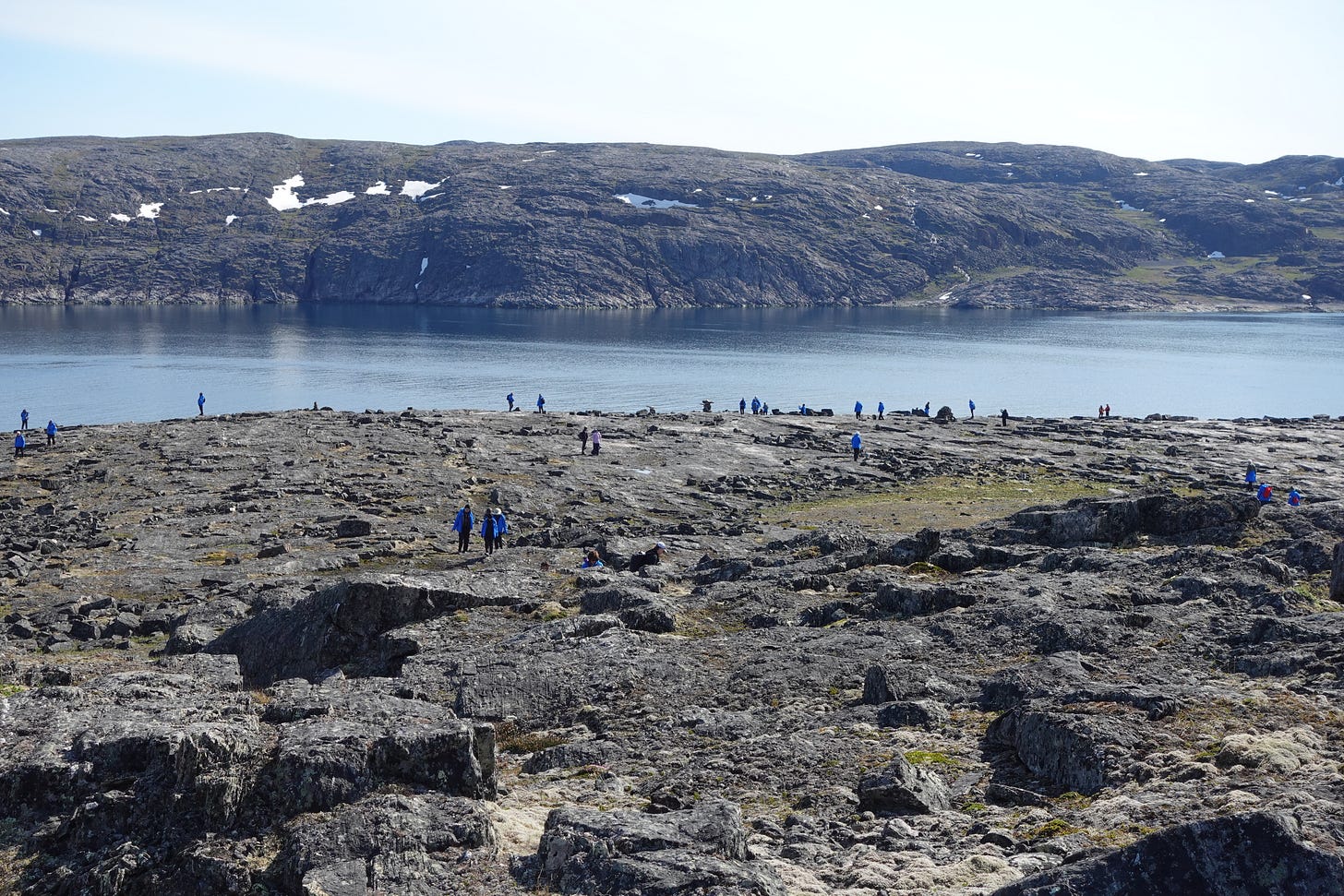Digges Islands - a seabird paradise
Hi everyone! It’s been a while since I’ve continued on in my recap of this past summer’s arctic expedition. I’ve been getting adjusted to a long-term stay in Spain, and I can’t wait to begin sharing my recent exploits! For now, I have just a few more newsletters that pertain to Adventure Canada’s Heart of the Arctic trip…
It was Digges Islands day! We had not one, but two excursions in order to explore both islands. First, we had what Adventure Canada called a “free roam” on West Digges. This place is really special because it is essentially one big archeological site, with remnants from the Thule, and even perhaps Pre-Dorset, all the way back to what may have been the last of the whale-based communities.
We had a wide range of experts on board the Ocean Endeavour who were there to tell us all about what we were seeing in real-time, from the geography to the botany to the marine life and to—you guessed it—the archeological finds. This was the first time our archeologist, Liz, was at Digges, so her commentary was fresh information that she was surveying in real-time. She pointed out things like a potential Thule gathering place, two fox traps, and rings of rocks where tents would have been resurrected.
If we weren’t roaming the rocks and staying a safe distance away from the archeology sites, we could join one of our marine biologists, Rhee, on the beach who had a mini aquarium set up with jellyfish and blueberry snails—which, if you’re wondering, look like blueberries with tiny fluttering wings.
After lunch, we took a zodiac ride around East Digges to view one of the largest colonies of thick-billed murres in Canada.
While adept swimmers, they are not so great at flying. To adapt, they have become excellent cliff-divers—in fact, they are the deepest diving bird that can still take flight. They will lay eggs on the side of the cliffs and then plunge into the immediate surrounding waters for food.
The eggs have a peculiar, pointed shape, which keeps them rolling in a circle, instead of off the side of the cliff. Then, roughly 3 weeks after being hatched, the male birds will accompany the younglings as they jump from the ledge and begin to learn how to survive on their own.
I had never seen so many birds in my life.
I was rolling a GoPro on my head, while my right hand held my camera and my left hand held my iPhone. I was desperately trying to capture anything I could of this breathtaking moment. The video still doesn’t do it justice, especially since I was, first and foremost, trying to keep a steady hand:
Hundreds of birds were zipping back and forth, to and from, over our heads. Groups sailed synchronized, in formation, tipping and diving as if held together by magnetism. They dove into the waters to hunt for fish and zoomed toward the cliffs to provide for their young. When you looked out onto those cliffs, you could make out rows upon rows of the black and white murre bodies, huddling together to watch over their eggs.
We asked our zodiac driver to kill the engine for a moment, and the squawking sounds echoed all around us. Splash, splash splash, went singular murres into the water feet from our zodiac. We didn’t talk, we just stared. And it didn’t matter where you stared, the birds were flying all around. We were surrounded—aliens inside the complex network of a murre colony that paid no mind to our intrusion. Life went on, and we were just passersby.
Song of the Week
The 2024 US election is HERE! Have you voted, or do you have a plan to vote, yet?!





